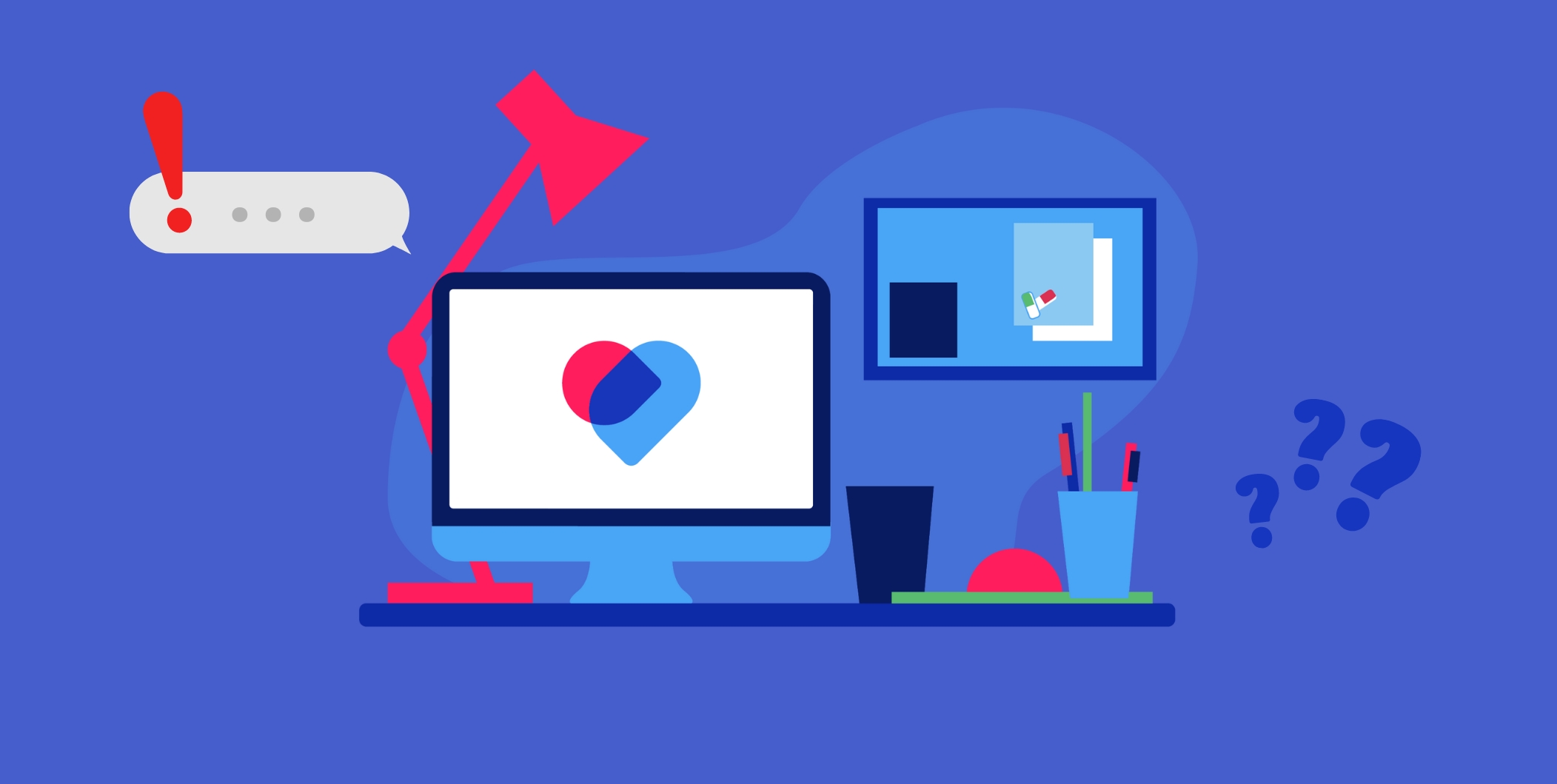Nov 5, 2025
Debunking 6 Popular Myths in Healthcare Communication
Apr 23, 2024 - Blog
In the complex world of healthcare, effective communication is crucial for delivering quality patient care. Yet, numerous myths about how healthcare professionals can and should communicate continue circulating, causing confusion and potential non-compliance with regulations like HIPAA.
This blog aims to clarify and debunk 6 of the most common myths surrounding healthcare communication. By setting the record straight, we strive to enhance understanding and improve communication practices within the healthcare industry.
Why is communication in healthcare important?
Communication in healthcare is essential for several key reasons. First, it ensures that information about a patient’s diagnosis, treatment, and care is accurately shared among all healthcare team members, from doctors and nurses to specialists and pharmacists.
This accuracy is crucial for coordinating effective treatment plans and providing safe, high-quality care. Effective communication also significantly impacts patient outcomes by reducing the likelihood of errors and improving patient understanding and compliance with treatment protocols.
Good communication builds trust between patients and healthcare providers, fostering a therapeutic relationship that enhances patient satisfaction and comfort.
What are the methods of communication in healthcare?
Healthcare communication can take many forms, each suited to different needs and situations:
- Verbal communication: Face-to-face, telephone, and video interactions for immediate clarification on complex topics.
- Written communication: Emails, texts, and documents like patient charts record ongoing care.
- Electronic communication: Use of EHRs and secure messaging for fast, secure data transfer.
- Visual communication: Diagrams, charts, photos, and videos to clearly explain treatments and health conditions to patients.
Related article: The Evolution of Communication in Healthcare Settings
Debunking common myths about healthcare communication
Effective communication is the backbone of quality healthcare, yet misconceptions about how healthcare professionals should share and handle information are widespread. These myths can hinder the delivery of care and compromise patient safety.
Let’s set the record straight and ensure our communication practices are both compliant and effective!
Myth 1: Email is a HIPAA-compliant form of communication
Myth: Many believe email is inherently secure and automatically complies with HIPAA (Health Insurance Portability and Accountability Act) standards for transmitting protected health information (PHI).
Fact: Email can be used to communicate PHI under HIPAA, but it must be adequately secured to meet compliance requirements. This involves encryption and other protective measures to ensure that only authorized parties can access the information.
Additionally, healthcare providers must obtain assurances from their email providers that appropriate safeguards are in place, typically formalized through a Business Associate Agreement (BAA). Without these precautions, standard email does not satisfy HIPAA regulations.
Myth 2: Texting patient information through SMS is a HIPAA-compliant form of communication
Myth: It's widely believed that sending patient information via SMS meets HIPAA's security standards, mainly because texting is an easy and immediate communication method.
Fact: Contrary to popular belief, standard SMS texting does not meet the HIPAA requirement for the secure transmission of protected health information (PHI). HIPAA mandates that PHI transmitted over electronic media be encrypted and secure to protect patient privacy and prevent unauthorized access.
Related article: Communicating With Patients Via Messaging Apps
Since standard SMS lacks these security measures, it is not inherently HIPAA-compliant. Healthcare providers wishing to text PHI should use encrypted messaging apps designed to meet HIPAA standards, ensuring that all communications adhere to privacy and security regulations.
Myth 3: All healthcare staff have unrestricted access to all Protected Health Information (PHI)
Myth: Many people believe that once they are part of a healthcare organization, all staff, regardless of their role, have unlimited access to patient records and PHI. This myth persists partly due to misunderstandings about information governance and privacy laws in healthcare settings.
Fact: In reality, access to PHI within healthcare organizations is strictly regulated under HIPAA and other privacy laws. These regulations enforce the “minimum necessary” rule, which stipulates that healthcare staff should only have access to the PHI necessary to perform their job duties effectively.
Each organization must implement policies to limit access based on specific roles, ensuring that sensitive patient information is only accessed by authorized personnel for legitimate reasons. This safeguard protects patient privacy and enhances the security of PHI.
Myth 4: HIPAA compliance is the same as patient consent
Myth: There's a common misunderstanding that if a healthcare practice complies with HIPAA regulations, it also automatically means they have patient consent to use or disclose health information and vice versa. This myth confuses regulatory compliance with the consent process, assuming they are interchangeable.
Fact: HIPAA compliance and patient consent address different aspects of patient information handling. HIPAA compliance refers to following specific privacy, security, and breach notification rules related to PHI, ensuring that such information is handled correctly according to federal guidelines.
On the other hand, patient consent is the process of informing patients about how somebody will use their medical information and obtaining their explicit permission to use or disclose that information for purposes beyond standard medical care.
While HIPAA sets the groundwork for how consent should be obtained and documented, obtaining actual patient consent is a separate and necessary action that healthcare professionals must take.
Myth 5: Health apps on smartphones are all HIPAA-compliant
Myth: A prevalent assumption is that all health apps installed on smartphones adhere to HIPAA regulations simply because they deal with health-related information. This belief can make users mistakenly think that any app they download that offers health services or collects health data automatically complies with strict privacy and security standards.
Fact: Not all health apps are HIPAA-compliant. HIPAA compliance applies specifically to covered entities like healthcare providers, health plans, healthcare clearinghouses, and business associates who handle PHI.
Many health apps, particularly those aimed at consumers for health and fitness tracking, do not fall under these categories and are not subject to HIPAA rules. Apps developed directly by or for healthcare providers that manage PHI must ensure they meet HIPAA’s stringent security and privacy regulations. Consumers should be cautious and review the privacy policies of health apps to understand how their data is used and protected.
Related article: How To Responsibly Share Medical Photos
Myth 6: Only digital communications are covered by HIPAA
Myth: It's a common misconception that HIPAA regulations only apply to digital communications, such as emails, EHRs, and digital transmissions of patient information. This belief may lead to neglecting the privacy and security measures required for non-digital forms of communication.
Fact: HIPAA covers all communication forms involving PHI, not just digital communications. This includes oral communications, such as conversations between healthcare providers and discussions with patients, as well as written communications, like patient charts and medical forms.
HIPAA’s privacy and security rules require appropriate safeguards for PHI in any format to ensure confidentiality and prevent unauthorized access, whether the information is stored electronically, spoken, or written on paper. Therefore, healthcare entities must ensure compliance across all mediums of communication.
How to stay up-to-date on healthcare communication standards
Maintaining healthcare communication standards is crucial for compliance, patient safety, and effective care coordination. To do this, healthcare professionals should regularly participate in training and continuing education programs that cover the latest regulations and technological advancements.
Subscribing to industry newsletters, attending relevant webinars, and joining professional organizations can provide updates and insights.
Additionally, regularly reviewing updates from regulatory bodies such as the U.S. Department of Health and Human Services (HHS) or the Office for Civil Rights (OCR) will ensure you’re aware of any changes in HIPAA regulations or other pertinent laws.
Discover more insights
For more detailed information and resources on maintaining compliance with healthcare communication standards, visit our website. We offer a range of materials to help healthcare professionals understand and implement the necessary practices to stay compliant and protect patient information effectively.
Explore our resources and ensure your communication strategies meet all required standards. Click here to learn more.
About the Author:

Marketing Associate at Celo
Remy is a passionate and creative marketer at Celo Health, a leading company in the healthcare technology sector. As a Marketing Associate, Remy plays a vital role in developing and implementing marketing strategies that highlight Celo Health's cutting-edge solutions and inform a diverse audience about the importance of secure technology in healthcare.


